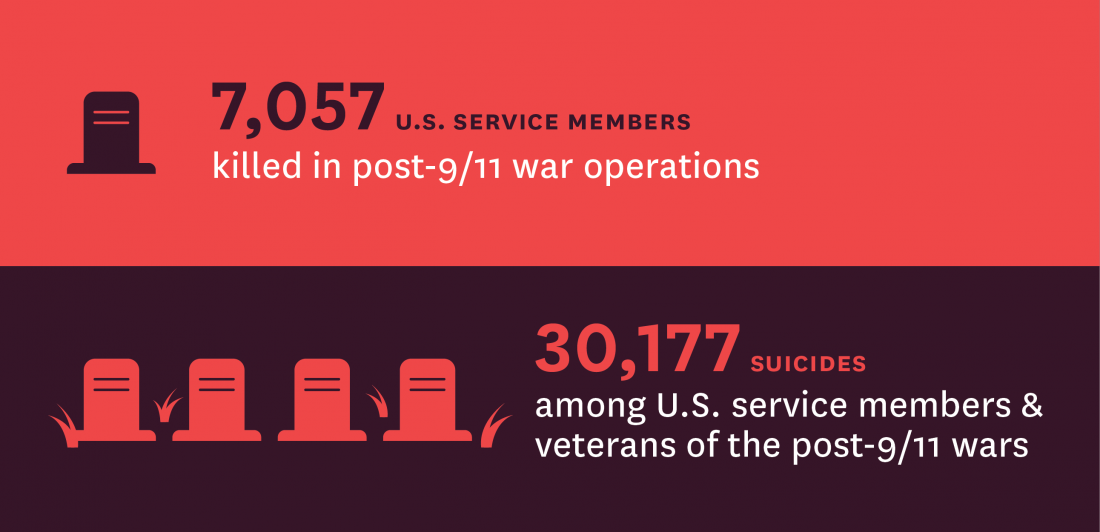High Suicide Rates among United States Service Members and Veterans of the Post-9/11 Wars

Suicide rates among active military personnel and veterans of the post-9/11 wars are reaching new peaks. This report uses governmental data, secondary literature, and interviews to document a suicide epidemic that is emerging among post-9/11 fighters as part of a broader mental health crisis.
The study finds that at least four times as many active duty personnel and war veterans of post-9/11 conflicts have died of suicide than in combat, as an estimated 30,177 have died by suicide as compared with the 7,057 killed in post-9/11 war operations. The report notes that the increasing rates of suicide for both veterans and active duty personnel are outpacing those of the general population - an alarming shift, as suicide rates among service members have historically been lower than suicide rates among the general population.
The report finds that these high suicide rates are caused by multiple factors, including risks inherent to fighting in any war such as high exposure to trauma, stress, military culture and training, continued access to guns, and the difficulty of reintegrating into civilian life. But the study finds that there are factors unique to the post-9/11 era, including a huge increase in exposure to improvised explosive devices (IEDs), an attendant rise in traumatic brain injuries (TBIs), and modern medical advances that have allowed service members to survive these and other physical traumas and return to the frontlines in multiple deployments. The combination of multiple traumatic exposures, chronic pain, and lasting physical wounds is linked to suicidal behaviors.
Additionally, the sheer length of the war has kept service members in the fight longer, providing more opportunities for traumatic exposure, and fueling a growing disapproval and ignorance among the public that has only enhanced veterans' difficulty finding belonging and self-worth as they reintegrate in society.

